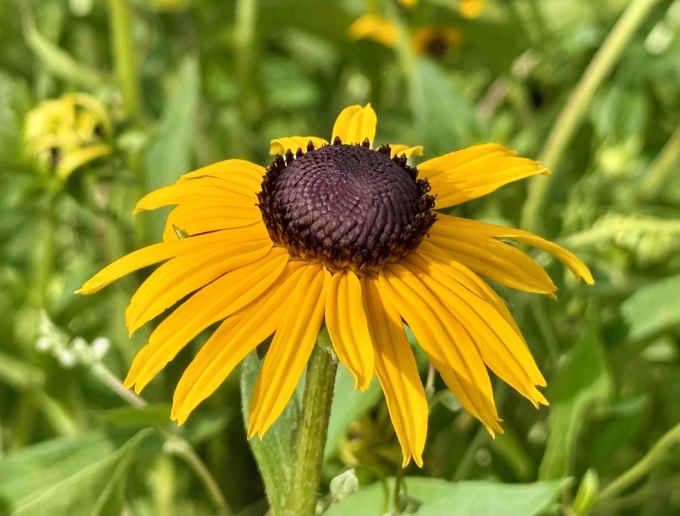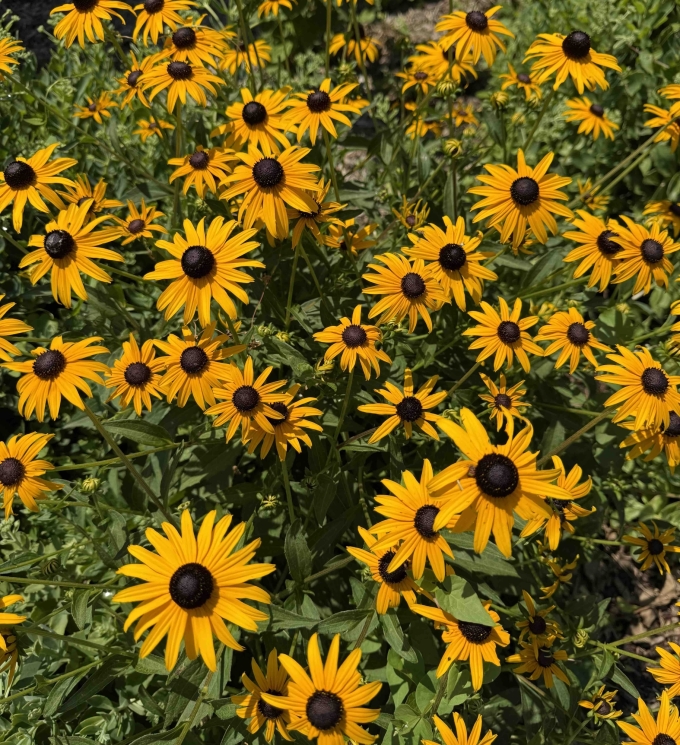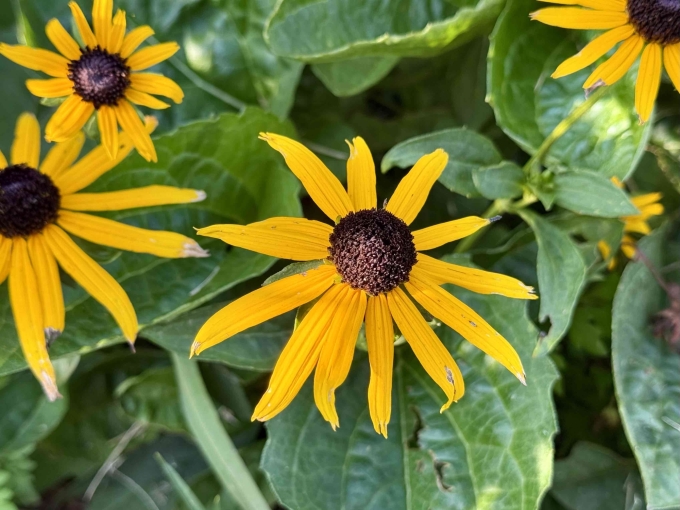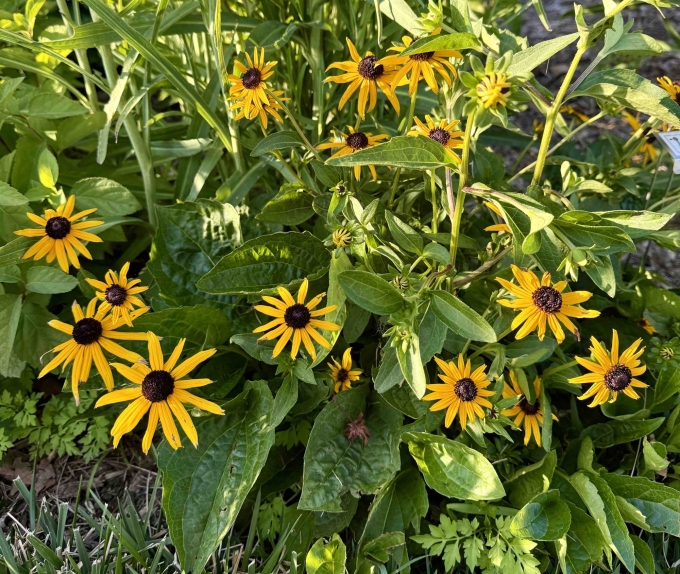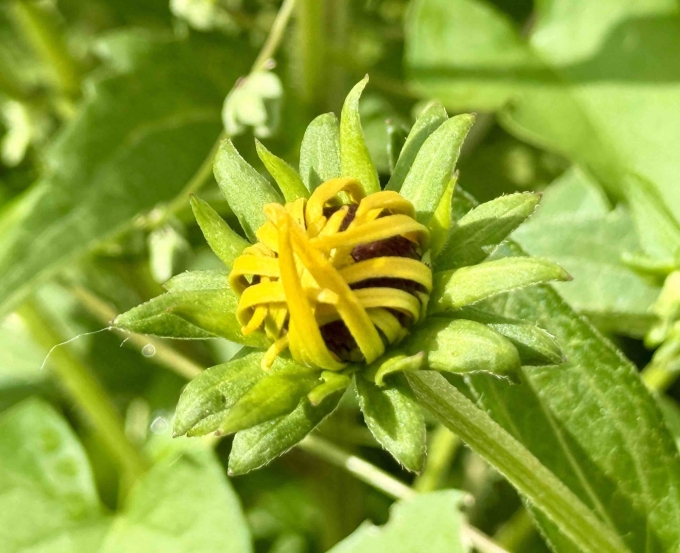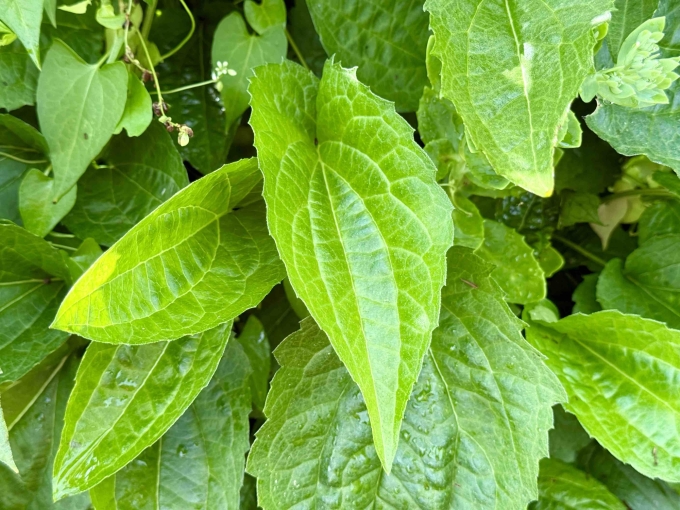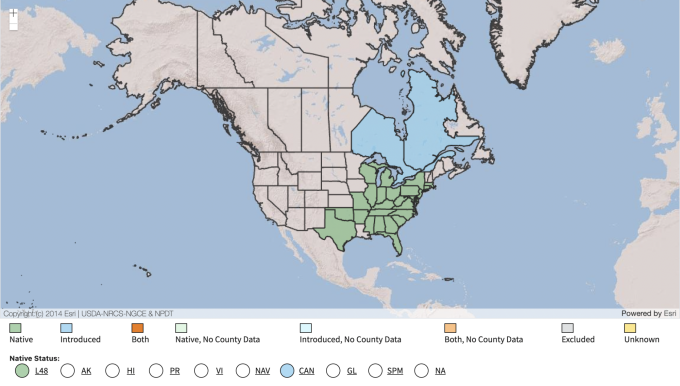Common Name: Black-eyed Susan, Orange Coneflower
Family: Asteraceae
Plant Type: Herbaceous Perennial
Native Range: Eastern and central North America, native to parts of Nebraska
Hardiness Zones: 3–9
Height: 2.0 to 3.0 feet
Spread: 2.0 to 3.0 feet
Bloom Time: Midsummer to fall (July–October in Nebraska)
Bloom Description: Golden-yellow, daisy-like flowers with a dark brown to black cone, held on sturdy stems
Sun Exposure: Full sun to part shade
Water Needs: Medium
Soil Preference: Well-drained soils; tolerates clay, loam, or sandy soils
Maintenance Level: Low
Suggested Use: Pollinator gardens, borders, mass plantings, native meadows
Attracts: Bees, butterflies, and birds (seeds in fall)
Tolerates: Heat, drought, clay soils, deer
Notable Features: Long bloom period, dependable perennial, excellent for pollinators and birds
Nebraska Growing Notes:
Rudbeckia fulgida is a reliable and long-blooming perennial Black-eyed Susan, native to prairies and open woodlands. It is more long-lived and clump-forming than the biennial or short-lived Rudbeckia hirta.
It thrives in full sun, tolerates Nebraska’s clay soils, and withstands heat and occasional drought once established. Its upright stems and dense growth habit make it ideal for formal and informal plantings alike, and its bright yellow flowers provide color and pollinator support through the heat of summer and into fall.
Deadheading spent blooms can prolong flowering, though the seed heads are ornamental and provide food for finches and other birds in winter.
Landscape Use:
Great for mass plantings, native borders, pollinator gardens, meadows, and foundation plantings. Pairs beautifully with Echinacea, Liatris, Solidago, Monarda, and ornamental grasses.
Caution:
Non-toxic and wildlife-friendly. Can slowly spread to form attractive clumps but is not invasive. Older clumps may benefit from division every 3–4 years to maintain vigor.
Garden Locations:
2, 5
Sources:
https://plants.usda.gov/plant-profile/RUFU2
https://www.missouribotanicalgarden.org/PlantFinder/PlantFinderDetails.aspx?kempercode=g630

